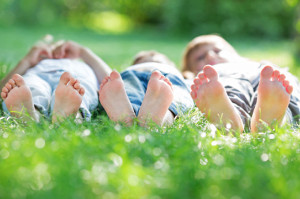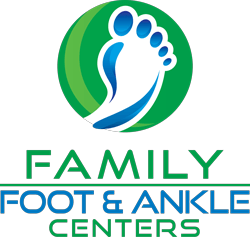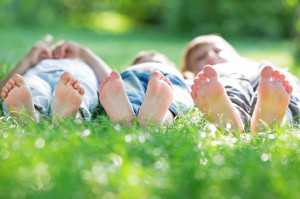Types of Juvenile Arthritis

Arthritis that develops in a child is known as juvenile idiopathic arthritis (JIA.) Juvenile means under the age of 16, idiopathic means the cause is unknown, and arthritis indicates inflammation, swelling, and pain in joints, including the ankle. While the cause is unknown, it is believed that genetics may play a role in the development of juvenile idiopathic arthritis. However, it is not considered to be hereditary. The five main types of JIA are oligoarthritis, polyarticular, systemic onset, enthesitis-related, and psoriatic arthritis. Oligoarthritis is the most common type, and affects up to four joints, including the ankle. Polyarticular arthritis affects five or more joints, including the ankle, and generally appears in the same joint on each side of the body. Systemic onset arthritis, also known as Still’s disease, is the least common. It affects the joints but also causes widespread inflammation, high fevers, and swollen glands, among other symptoms. Enthesitis-related arthritis affects the ligaments and tendons that attach to the bones. Finally, psoriatic arthritis can infect multiple joints, but also causes a scaly skin rash. If your child exhibits pain, swelling, tenderness, redness and stiffness in the ankle joint, please consult with a podiatrist to determine the cause and discuss treatment options.
The health of a child’s feet is vital to their overall well-being. If you have any questions regarding foot health, contact one of our podiatrists of Family Foot & Ankle Centers. Our doctors can provide the care you need to keep you pain-free and on your feet.
Tips for Keeping Children’s Feet Healthy
- Make sure their shoes fit properly
- Look for any signs of in-toeing or out-toeing
- Check to see if they have Clubfoot (condition that affects your child’s foot and ankle, twisting the heel and toes inward) which is one of the most common nonmajor birth defects.
- Lightly cover your baby’s feet (Tight covers may keep your baby from moving their feet freely, and could prevent normal development)
- Allow your toddler to go shoeless (Shoes can be restricting for a young child’s foot)
- Cut toenails straight across to avoid ingrown toenails
- Keep your child’s foot clean and dry
- Cover cuts and scrapes. Wash any scratches with soap and water and cover them with a bandage until they’ve healed.
If you have any questions, please feel free to contact one of our offices located in Corsicana, Ennis, and Waxahachie, TX . We offer the newest diagnostic and treatment technologies for all your foot care needs.
Read more about How to Care for Your Child’s Feet
The information provided in this article is not meant to be medical advice and is for educational purposes only. If you would like to learn more about topics related to podiatry, feel free to contact Family Foot & Ankle Centers by clicking here or calling 972-597-4132 to reach our Waxahachie office, 903-872-9910 to reach our Corsicana office, or 972-875-3668 to reach our Ennis office.



